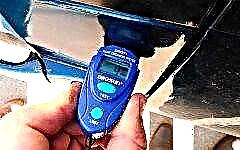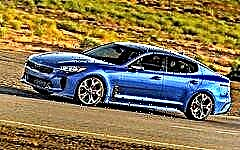 There are many reasons why Lada Granta does not start. If the Lada Granta does not start, the starter does not turn, then this is one situation, and if the starter turns, then this is a completely different situation.
There are many reasons why Lada Granta does not start. If the Lada Granta does not start, the starter does not turn, then this is one situation, and if the starter turns, then this is a completely different situation.

The content of the article:
- No gasoline
- No spark
- Conclusion
In addition, there are many options, which are discussed in the article below. First, it is necessary to determine whether gasoline enters the cylinders. To do this, we unscrew the candles, after which we examine them.
Grant will not start - the candles are dry

After the candles have been unscrewed, we inspect. Dry candles indicate that gasoline is simply not supplied to the cylinders. There are a lot of reasons for this, but the main ones are quite typical. First of all, we turn on the ignition, after which we listen to whether the fuel pump is working. If it does not work, then we listen to whether the fuel pump turn-on relay clicks after the ignition is turned on. If it does not click, then no voltage is supplied to it, and this, in turn, means either the fuse has blown, or the matter is in the ignition switch. We almost completely exclude the second option, because this is a special case that requires separate consideration.
After we have made sure that the voltage from the ignition switch to the fuse, and then from the fuse to the fuel pump activation relay, we raise the back seat, and then remove the chip from the fuel pump. Here we need either a multimeter or a test lamp. We turn on the ignition, the lamp should light up, or the multimeter should show a voltage of 12 volts at the terminals of the block. If there is none, then we are looking for a break on the way from the fuel pump activation relay to the fuel pump itself. It is worth clarifying that this is a very rare case, which is practically impossible in practice, it is worth starting the search from the chip itself, most likely, the wire broke at its base.

After we have made sure that the fuel pump is pumping fuel, we go to the engine compartment, find the fuel rail, unscrew the cap from it, and then press the spool. Naturally, this must be done with the ignition on. What is all this for? This is necessary in order to clarify whether the fuel rail is pressurized. The pressure in the fuel rail may not build up at all, most likely the reason for this is either the fuel filter, which is clogged, or the fuel pressure regulator in the fuel rail.
Checking the filter is easy enough. To do this, disconnect the fuel supply from the fuel rail and then turn on the ignition. You need to put some old one under the hose, a working fuel system will quickly fill a liter bottle. In order to check the fuel pressure regulator, you need to pinch the hose that goes from the rail to the fuel tank. This is the so-called return line. We squeeze, and then click on the spool. With a clean fuel system, as well as a working pressure regulator, fuel will flow from the spool accurately.
After we have made sure that the fuel goes to the ramp, we need to find out if the injectors open. This is a very difficult task, without a specific tool. Therefore, we simply twist the starter, after which we unscrew the candles, and then we look at their condition. Naturally, if the candles remain dry even after this, it is obvious that the nozzles do not open.
All injectors cannot fail at once, so it is logical to assume that the control unit for some reason does not give impulses to them. One of the reasons for this behavior may be the operation of the immobilizer, which blocks the operation of the injectors, since it does not recognize the key. In such case, the buzzer will notify the driver with a double beep.
If this does not happen, then we take a multimeter in our hands, turn on the ignition, and then measure the voltage between the red-pink wire that goes to the injectors, as well as the mass of the car. The fact is that the injectors in this case are controlled by a minus, that is, a plus is supplied to them constantly. The minus is supplied by impulses under the control unit. If a plus comes to the injectors, then it is logical to assume that the control unit does not understand the position of the crankshaft. Naturally, we look at the crankshaft sensor chip.
Lada Granta won't start - candles in gasoline

If the unscrewed ones are wet, then it is logical to assume that gasoline enters the cylinders. Accordingly, it is necessary to dig in the direction of the spark. With DPKV everything is exactly in order, because the ECU sees the scroll and opens the injectors.
On a car with an 8 valve engine, where the ignition module is installed, this procedure is much easier than on cars with a 16 valve engine. To begin with, we need to make sure that the voltage is supplied to the ignition module, namely, to the primary winding of the module. To do this, remove the chip from the module, and then turn on the ignition. there should be 12 volts between the center wire and ground. If they are not there, then we check all the wiring to the control unit. If everything is in order with her, then with 90% confidence we can say that the problem is in the ECU. After we went to the cartoon, the power comes in, we check the module itself. To do this, we check the resistance of the primary winding with the same multimeter. It is measured between the second and third terminals of the coil.

The resistance should be about 1.2 kOhm. After that, we check the resistance of the secondary winding coils. For this, it is measured between the terminals on high-voltage wires 1 and 4, as well as 2 and 3 cylinders. This resistance may differ from manufacturer to manufacturer, so here it looks relative to each other. On average, the indicator varies from 6.5 to 12. It is worth clarifying that this method of checking the module may not always be reliable, since the coil has different characteristics at different thermal conditions.
It remains to check the high-voltage wires, measure their resistance with a multimeter, it should be no more than 5 kOhm on the shortest wire, and also no more than 10 kOhm on the longest wire, respectively. Unfortunately, it is quite problematic to check high-voltage wires for breakdown at home; this may require at least a megohmmeter.
Many, in the absence of a spark and wet candles, immediately climb to check the crankshaft position sensor. Here I must say that the fuel supply in the cylinder already indicates that this sensor is working, but how reliably it shows the position of the crankshaft is difficult to say. At home, it is easier to check the crankshaft position sensor with a replacement for a known good one.
Conclusion
This is a list of typical malfunctions in which Lada Granta will not start. It is worth noting that the real list is much larger than this, since every case may not be typical. It also happens that cold injectors, for example, behave adequately, but after warming up they start pouring. And it happens, on the contrary, that on a cold one they cannot provide sufficient performance, but on a hot one, on the contrary, they work properly. Unfortunately, even in big cities it is often difficult to find a competent engine diagnostics specialist.
This line of work requires at least three elements to work.
The first is a motor tester. They are quite extensive, so there is no point in considering them. The second is a diagnostic scanner. It is often very difficult to find a multibrand scanner with good functions, in addition, its cost exceeds all reasonable limits. The third is a gas analyzer. Only equipment for work on engine diagnostics costs at least 200 thousand. In addition, training takes quite a long time.Therefore, very few people are engaged in diagnostics, if we talk about competent diagnostics. Well, one more case why the Lada Granta may not start.
WHA











